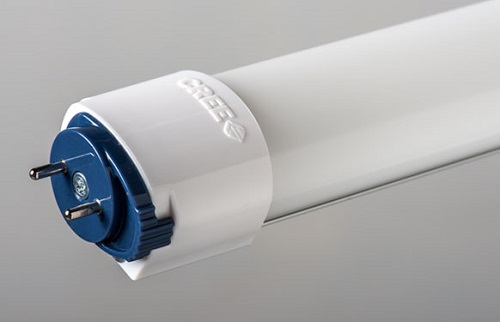Cree introduced a series of LED T8 replacement tubes yesterday in their bid push the lighting market towards 100 percent adoption of LEDs. The LED T8 series is designed to replace linear fluorescent tubes.
 |
|
Cree LED T8 Series fluorescent tube replacement (photo courtesy of Cree) |
The linear fluorescent market is enormous in the U.S. With the LED T8 series providing better quality, 30 percent energy savings, and universal driver capability, more commercial lighting users will be compelled to switch to LED lighting and stop using linear fluorescent tubes.
““Similar to what we’ve achieved with the Cree LED Bulb in the residential market, the Cree LED T8 Series is revolutionizing the commercial lighting market with a product that saves energy, delivers superior light quality and is universally compatible with nearly all existing fluorescent T8 ballasts, “ said Chairman and CEO Chuck Swoboda.
In the U.S., over half of all electricity is used in commercial lighting. Linear fluorescent lighting dominates the commercial sector, comprising of over 2.3 billion sockets and using 42 percent of all electricity for lighting. Of the 2.3 billion sockets, 1.1 billion fit with Cree’s LED T8 series.
In an interview with Forbes, Cree’s Vice President for corporate marketing and business development, David Elien commented on Cree’s strategy to target the commercial lighting market: “The commercial sector accounts for half of electricity used in lighting, and the linear fluorescent market accounts for about half of that. We have introduced the Cree LED T8 lamp series and we expect it will accelerate adoption of LEDs in the commercial sector.”
What makes Cree stand out from its competitors is that unlike companies such as Osram Sylvania and Philips who include LED lighting into their lighting portfolio or Toshiba who considers it part of their various electronic related products, Cree focuses on LED lighting and the various problems related to integrating the technology into the marketplace, according to Forbes.
LED manufacturers are forcing consumers to compromise on lighting choices, which is hindering rapid market acceptance. Instead, providing consumers a new product that is better than what is being replace is the key to convincing them to make the switch, said Elien.












